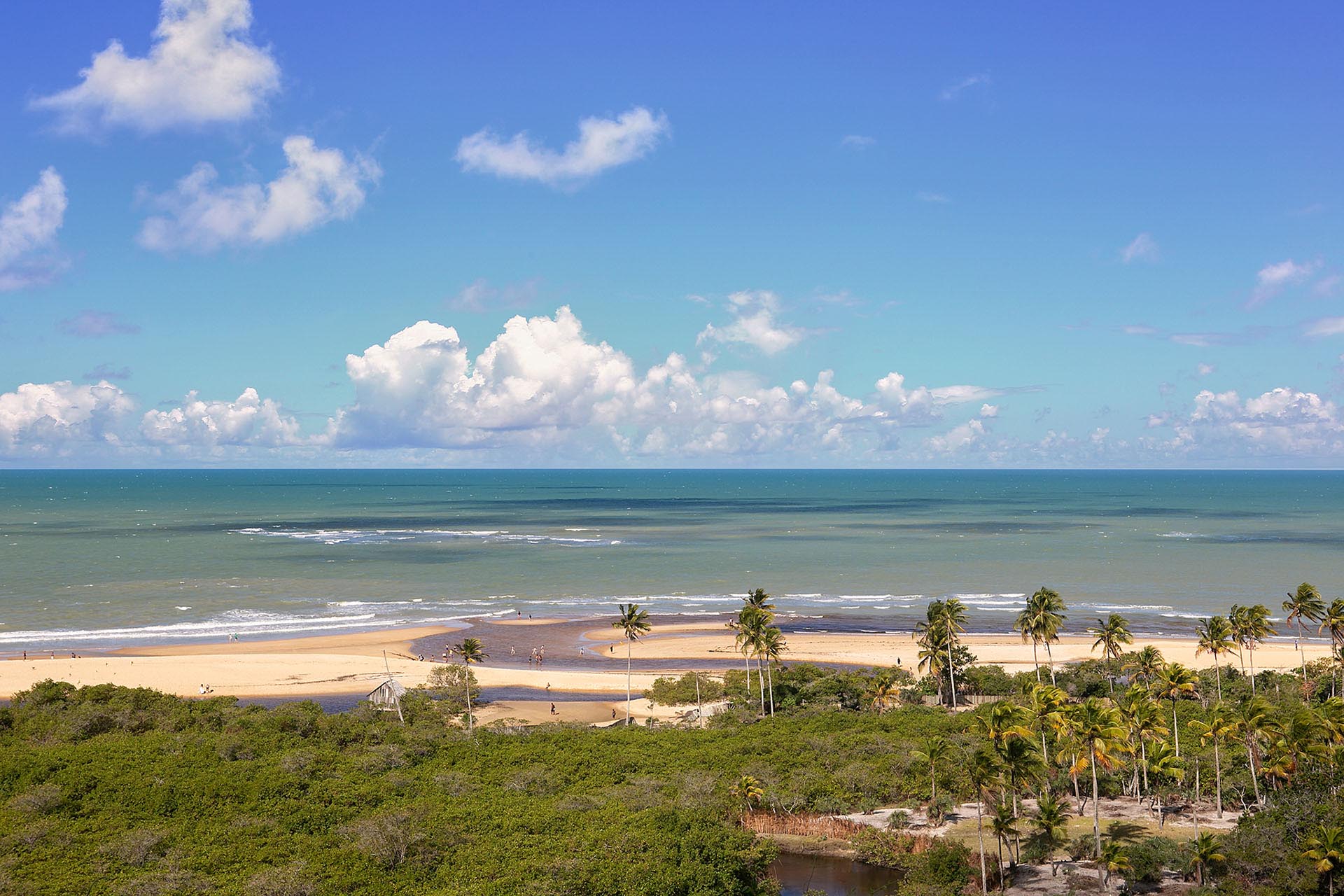
CONDE NAST TRAVELLER
“Tucked away in Bahia is a beach town where the locals and the tourists live as one.
There’s something wrong here, you think the first time you see Trancoso’s Quadrado. Here it is, noontime, the sky above you white with sun, and you’re standing in the main square of this little 16th century town, a five-acre rectangle of lawn marked at the far end by a simple church made of coral blocks and whale bones. On either side of you are little adobe houses, former fishermen’s cottages, each painted the truer-than-true colors of a rain-forest jungle—heliconia red, toucan-beak orange, tree-frog green, bromeliad pink—their facades nearly obscured by stalks of banana trees and clumps of torch ginger. And yet there’s not a soul in sight. The houses’ white shutters are closed. No one sits on the benches and tables that clutter the grass outside many of the houses; no one plays soccer on the little pitch by the church; there’s nowhere to eat, no one to see. It feels as if the entire town of 9,900 people has taken off, en masse, for a party to which you’ve not been invited—because why else, then, would you leave someplace so beautiful?
And then you take a ten-minute stroll, turning right onto the dirt path just before the church and crossing a short, slatted-wood bridge that cuts through a mangrove swamp, and you realize that there is in fact a good reason to leave someplace beautiful, and that’s if you can go somewhere more beautiful: Trancoso’s beach, a nearly 15-mile stretch of sand the color of unpolished gold, facing water so clear that even when it’s at chin height you can still look down and see your toes. Like many perfect beach towns, Trancoso has a sort of out-of-time quality, largely because time itself has no meaning here. When the sun is up, you go to the beach. You spend all day there, splashing in the water, baking on the sand. And when the sky begins to turn the color of those heliconia-red houses, you heave yourself to your feet and walk back uphill, where you discover that—surprise!—in your absence, the Quadrado has come alive, the doors flung open, the tables set with white china, the paper lanterns which lace through the monkeypod trees switched on, and that the party has migrated from the beach to the grass and, despite what you feared, you’ve been invited after all.
But if Trancoso is distinct, it is also somehow familiar, and on that initial visit, it felt oddly like someplace I’d been before. It took me a day or so to realize that it wasn’t so much the town’s appearance or physical dimensions that were recognizable but rather its particular blend of glamour and lassitude, preening and insouciance, money and a collective decision to pretend money doesn’t matter at all.
But why Trancoso? Brazil, after all, has a 7,500-mile coastline from top to bottom, which means there are literally thousands of pretty beaches, thousands of potentially pretty villages. Why does fashion heiress Georgina Brandolini d’Adda have a house here? Why has Anderson Cooper bought a plot of land right on the Quadrado? Why, during Brazil’s mild winters, does Instagram fill with images of the little white São João Batista Church? How, in other words, did Trancoso become Trancoso?
“It was because of the hippies,” Wilbert Das told – “They came to Trancoso in the late seventies and ended up reviving it. They were Swiss, Argentinian, Russian, Italian, French, Brazilian. They saw and appreciated the town for what it was, and they made the people who live here appreciate it, too. It was the hippies who blocked the Quadrado to all traffic; they were the ones who saw something to preserve. There’s this cliché that tourism cheapens a place, but here, tourism saved it. Of course, those hippies are now rich.”
I’m always skeptical of claims that locals and tourists mix seamlessly, and with mutual respect. But it really did seem to be the case in Trancoso.
There was a sense of, if not equality, then at least community, of belonging, of everyone’s fundamental right to the beach itself. And indeed, once you were in the water, you couldn’t tell who was rich and who was poor: We were a series of bobbing heads, lolling there like seals—the sea be- longed to us all. I couldn’t imagine a scene like this in the Hamptons, or anywhere else, really. But here in Trancoso, I found it.”



